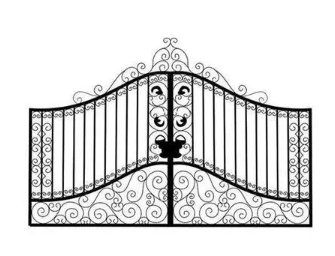
2024/11/22
1. The shock and excitement of the collision with the customer's aesthetic conception is half of the success of the work.
Design, customer-oriented, in contact with customers, in-depth understanding of the iron project in such as the customer's aesthetic level and preferences, environment style requirements, product use function, material requirements, shape requirements, structural strength requirements, surface effect requirements, construction site conditions, with other on-site processes, etc., must be clearly controlled. In particular, iron processing designers should arrange the composition design from a variety of comprehensive factors, and use their creativity and imagination to discuss with customers with their own ideas and ideas, so that the intention of the two tends to be consistent.
After the design composition scheme is determined, the designer first hand-painted a number of sketches, selected by the customer, and then produced 3D renderings or CAD drawings.
2. In the drawing lofting, according to the ratio of 1∶1 on the thick steel plate platform to draw the various parts, and according to their own technical experience of steel material and process requirements to make small changes to the direction of the drawing lines. Measure the material size on the lofting drawing and write the material list. Remove the material.
3. For large orders of the same specification style, it is necessary to make standard parts for each decomposed part first, adjust it, and then make a fetal mold in order to mass production. However, the development of fetal tools and molds is sometimes a difficult process that requires experienced technicians and technical workers to complete.
4. The creation of individual works of individuation depends on skill and subjective imagination.
Step
5.Cut. Modern CNC cutting technology has brought convenience to the exquisite iron art. For tens of millimeters thick sheet can be gas cutting, plasma cutting, but also water knife cutting. For plates with high precision requirements, laser cutting (an expensive one) and wire cutting (the cost is second only to laser cutting) can also be used. Of course, a large number of ordinary saw blade cutting and oxygen cutting, the accuracy is general, suitable for products with low precision requirements.

6. After cutting the raw materials according to the cutting list, the "modulation" process is required first, because some materials, especially solid materials such as flat steel, square steel, round steel, are often irregular in shape, and need to be straightened in the anvil to facilitate the processing and production is standardized and convenient, and ensure the beauty of the finished product.
7. Forging and twisting of raw materials. When forging and smashing processing, there are cold forging and hot forging, depending on the thickness of the material and the process requirements, the use of electric air hammer or hand hammer smashing. Anvil, chisel, pliers, pattern, hammer, red furnace, quenching bucket, grinder, polishing machine, pliers, cutting machine, bending machine, drilling machine, welding machine and all kinds of special equipment made by ourselves.
The various textures, branches, curves and three-dimensional effects of flowers and leaves forged or twisted are the concrete embodiment of the wisdom and art contained in iron art. The smooth and rhythmic fast and accurate work of skilled technicians is simply an artistic performance. This process is tiring, but it is more happy, and it is the key to whether the product can add value.
8. Grey cast iron, white cast iron, malleable cast iron, wear-resistant cast iron, ductile cast iron, malleable cast iron, chilled cast iron and austenitic cast iron.
Iron is mainly used in gray cast iron, ductile cast iron and malleable cast iron, they are mostly used in iron components and decorative accessories, its hardness and strength than steel, but plasticity, toughness, fatigue resistance than steel small. When pouring, it is necessary to control its carbon content between 2.11%-6.69%, if the carbon content is greater than 6.69%, do not use it, because it is too brittle. Gray cast iron has low strength, poor toughness, good wear resistance, simple melting ingredients, low cost, and is widely used in iron castings. Malleable iron commonly known as horse iron (malleable steel), it is not directly cast out, but first poured into white cast iron castings, and then after a long time of high-temperature withdrawal, the cementite decomposition, and obtain the cast iron of flocculent graphite, its toughness is high, some high grade iron accessories and ornaments, especially widely used in export products. But malleable cast iron can not be turned wire, machining performance is not as good as ball ground cast iron.
9. Assembly and welding. It is very important to form a "solution pool" when welding, without inclusion of welding slag, otherwise the "slag" is not firm and the strength cannot be reached.
Cracks may occur during the welding process, during the cooling of the weld and for a considerable period of time thereafter. Ordinary carbon steel is less likely to produce delayed cracks, and an appearance inspection should be carried out after the weld is cooled to the ambient temperature. The delay time of low-alloy steel welding is longer, and the appearance inspection is also carried out 24 hours after the welding is completed to ensure the strength of the workpiece.